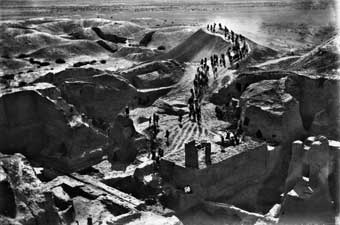Through the gates of the museum in World archaeology
The founding of the University of Pennsylvania Museum in the 1880s was part of the great wave of institution-building that took place in the United States after the American Civil War. The new wealth created after the Civil War gave incentive to philanthropy as a means of earning social recognition, and many wealthy and civic minded Americans thus turned their attention to cultural life and institutions.
The founding of the University of Pennsylvania Museum in the 1880s was part of the great wave of institution-building that took place in the United States after the American Civil War. The new wealth created after the Civil War gave incentive to philanthropy as a means of earning social recognition, and many wealthy and civic minded Americans thus turned their attention to cultural life and institutions.
Philadelphia was at the centre of the industrial and cultural ethos of the times. It was known for its manufacturing, railroads, and commerce, but also for its institutions of learning, such as the American Philosophical Society, the Academy of Natural Sciences, and the University of Pennsylvania. The latter, though founded in the middle of the 18th century, was undergoing a renaissance under Provost William Pepper, a physician and medical professor, and under his leadership, the institution was transformed into a modern university. When, in 1887, he was approached to help send an  world archaeological expedition to Mesopotamia, he leapt at the prospect.
world archaeological expedition to Mesopotamia, he leapt at the prospect.
A group of prominent Philadelphia men promised to fund the fieldwork, and the University resolved that ‘all finds which can be exported are to … become the property of the University of Pennsylvania, provided the said University furnish suitable accommodations for the same in a fire-proof building…’